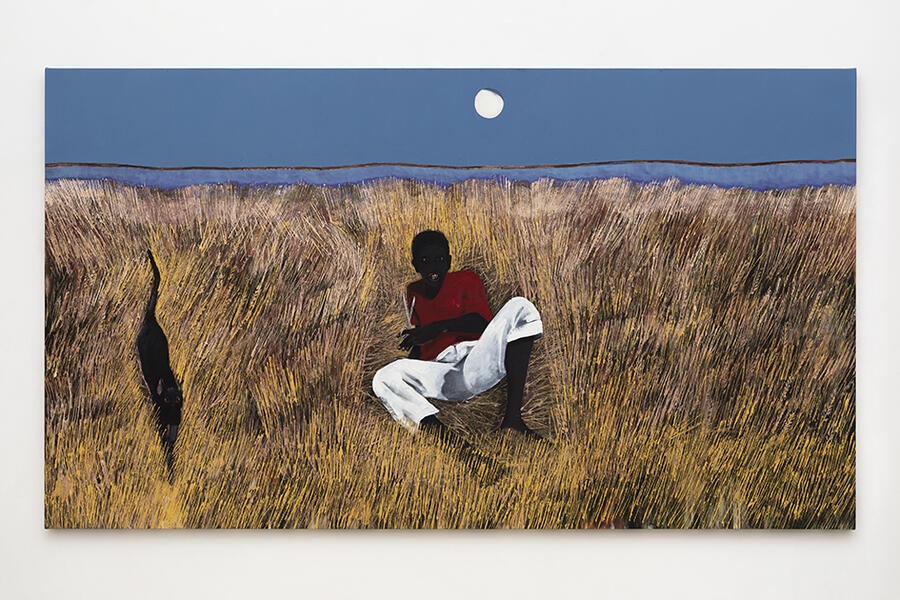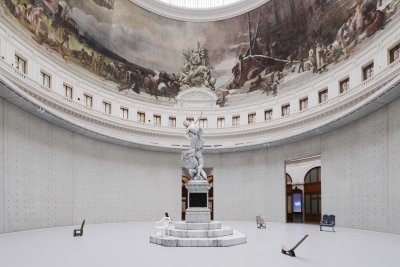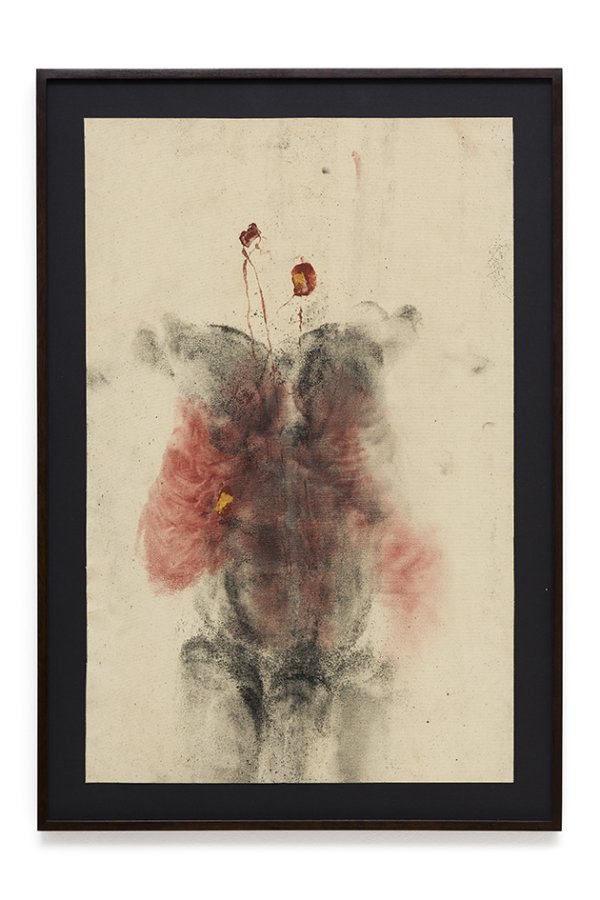Sesta
Oil on canvas
170 × 300 cm (66 15/16 × 118 1/8 in.)
Amidst the tall grass of a seaside dune, the front-on pose of a young man in the centre of the painting arrests the viewer. He is lying down, leaning nonchalantly on his elbow, in a manner that underlines the title of the work Sesta, which means “nap.” Beneath a moon that is missing a quarter, the artist makes this figure the “master and possessor of nature”: he dominates the landscape with the same silent deftness as the feline that meanders and makes its way through the wild grasses to the left of the painting.
The composition highlights the vegetation, painted in yellows and brown hues, with an energetic and precise gesture that contrasts with the calm blue of the night sky. For the artist, this bush is a salutary and protective element; it is here that the first quilombos—autonomous communities founded by escaped slaves, known as “maroons”—were created in the Brazilian hinterland, but it is also the landscape crossed by the slaves freed by Harriet Tubman on the Underground Railroad.
Nature is therefore a refuge, a familiar environment for these populations and their descendants, a territory that they know perfectly without dominating it, but of which they have an intimate understanding. “I was thinking of the biblical parable of the good seed and the weeds and the need to separate what is harmful from what is fertile and useful, with one exception: in the parable, the sower had to wait for the harvest to be able to separate the weeds from the wheat; here, the sower identifies, in advance and with scissors, what is good from what is bad.”
Drawing on an imaginary world where myth, history and religion merge, Antonio Oba weaves, with great freedom, the fabric of a story that goes beyond the limits of a hermetic interpretation.






